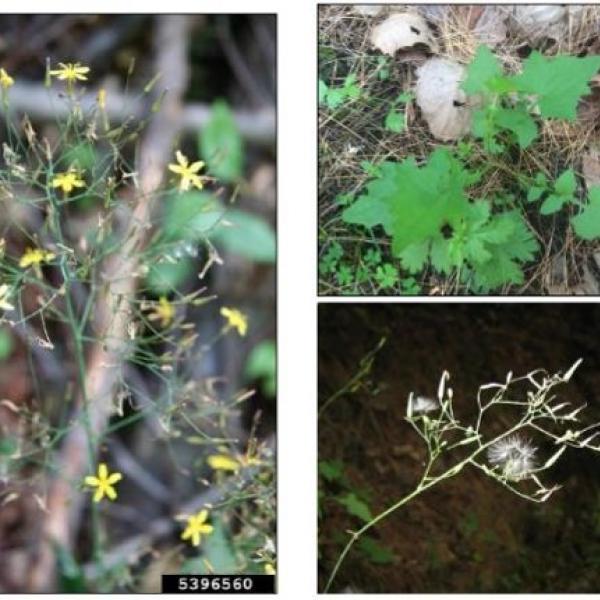
Wall Lettuce (Mycelis muralis) is an early detection invasive species in Vermont. While not well established, it has the potential to spread quickly and out-compete native flora. It is a watch list species in New Hampshire meaning the plant has invasive tendencies but is not yet prohibited. Wall Lettuce is also listed on Vermont’s unofficial invasive plant “watchlist”.
A member of the Aster Family (Asteraceae) and native to temperate Europe, Wall Lettuce gets its name for its habit of growing along fences and walls. This plant reproduces almost exclusively by seed, where a single plant can produce 500 seeds in suppressed conditions and over 11,000 seeds in full sun. Wall Lettuce is cold tolerant and found in forests, forest edges, clearings, and disturbed habitat. This plant has spread across New England, the North West, Great Lakes Region, Alaska, British Columbia, Ontario, and Quebec. Wall Lettuce also produces a rosette that can overwinter. Be careful when pulling or picking seed heads, as the plant exudes a milky substance that can cause slight skin irritations in some people.
To learn more, check out resources at the New England Wildflower Society (NEWFS), Nature Gate, and the Burke Museum.
Photos- Wall Lettuce produces an open panicle, with 5 yellow ray flowers. Leaves are pinnately lobed, with deep indentations, and lower leaves have clasping projections at the base. Similar in appearance to dandelion leaves, Wall Lettuce leaves have large triangular tips. The seeds are equipped with a pappus (tuft), making wind dispersal an important factor in their spread.
Photo Credit: R. Videki, CC by NC 3.0; E. Spinney, VT FPR; L. Mehrhoff, CC by 3.0.